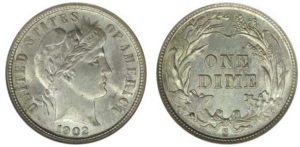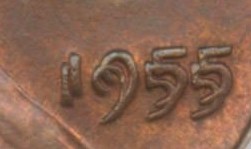
Haven’t we all heard about grandma’s or grandpa’s collection of old coins, stamps or electric trains that are just building dust in their basement or attic? Well let grandma know that she might have accumulated a small fortune and not even know it.
There are also those who are active collectors, but do not realize that the collections that they have might well be a hidden treasure of valuable merchandise.
Let’s talk about old coins. Here you have not just face value of the item, but also the suggested value of the coin itself.
How Do You Determine if a Coin is Worth More Than Its Face Value?
There are many ways to find out if the coin you found in Grandpa’s attic (or yours) is worth its weight in gold and here are a large variety of sources available to find out what your coin is worth.but before we delve into this, here are just some tips on where (and when) old coins are worth much more than their face value.
Investing in Silver Coins
Any dimes, quarters, half-dollars or dollars that were created in 1964 or earlier were made of 90% silver are worth more than their face value. As of the writing of this article, the current price of silver is $20.52 per ounce. If you have any of these coins lying around, you can estimate what the current cost is and that is if you were just selling it for the silver value. If you have them in certified form (see below), the price will most likely rise.
Coins and Bills are Valuable if They Have Minted Defects
Now, let’s go to the collector’s corner. There is a big market for old U.S. coins and the most interesting (and most expensive) ones are the coins that were minted with certain defects, called Mint-made errors and occur during the minting process. The types of coins that have these characteristics are known as varieties and may be intentional or made by machine error. This also applies to bills that are made with defects. Both types can bring in a substantial amount of cash if you are lucky enough to find one.
Let’s take a look as some of these varieties:

Look at the nickel on the left. It has a lamination crack, created in error during the minting process.
“Doubled-die” Lincoln penny. These pennies had the year accidentally printed twice and sometimes the wording “Liberty”…”In God We Trust” and can bring you $1000.00 or more if found.
1943 copper Lincoln penny. The U.S. government moved to minting pennies in zinc-coated steel instead of the standard 95% copper/5% zinc combination in order to salvage as much copper as possible for the war effort; however, some copper coins in 1943 were still made by accident. If you have one of these 1943 copper coins, that may bring you a pretty penny of value. With those examples, one can notice that coins with defects can be very valuable in the coin collector’s market.

“Doubled-die” Lincoln penny. These pennies had the year accidentally printed twice and sometimes the wording “Liberty”…”In God We Trust” and can bring you $1000.00 or more if found.
Certification Can Raise the Value Even More
Whether old coins have defects or not, it is also the condition of the coin that can bring value. Do you have an 1885 silver dollar that is so shiny you can see yourself in it? If so, it would be worth a lot more than those same year silver dollars that show signs of wear, such as cuts and scratches, as well as being dull in its shine.
Whether your coins are shiny or dull, take them to be certified and that will help you sell them as the buyer will see that they have already been reviewed by a reputable coin certification company. PCGS is one of the most popular coin certification organizations around.
Join a Coin Club
Get to know more about your coins. One fun way is by joining a coin club. The U.S. Mint provides a lot of deals on coin clubs.
So, take a look in your attic or basement and see what might be hiding there. Maybe you might decide to keep you collection and add to it and if you do, just think of the treasure you will have for your grandchildren when they decide to come to grandpa’s or grandma’s attic to see what’s there!
 What Makes Me Different From the Others?
What Makes Me Different From the Others?